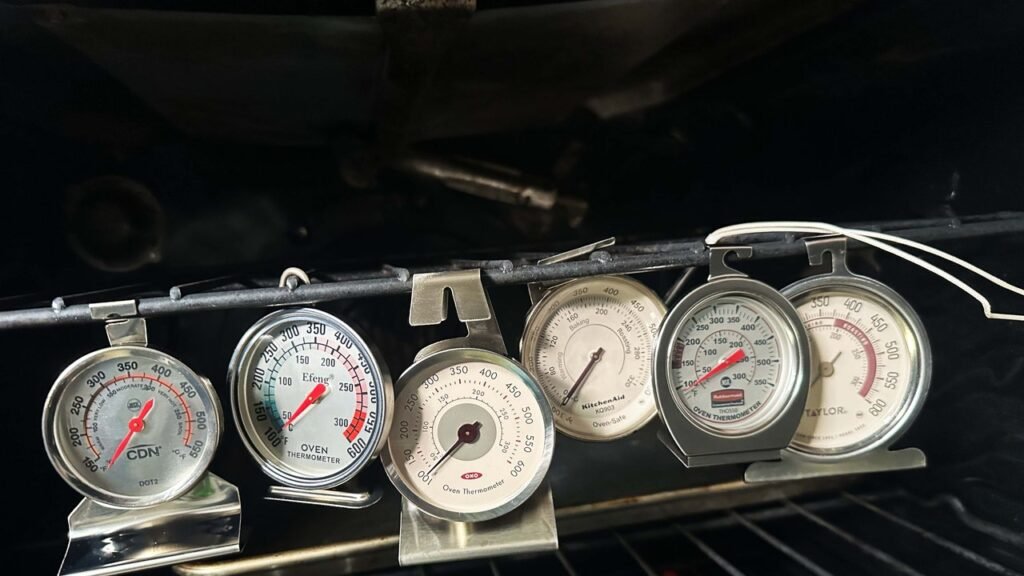Preheat oven. This is the first step in any recipe that uses an oven. Give your oven time to light up and create the perfect conditions for cooking dinner or dessert. When it comes to measuring the temperature of actual food, we’ve got plenty of recommendations for the best instant-read probe thermometers. But what about your actual oven temperature?
best oven thermometer
If you’re an avid baker, your bread and other pastries need consistent temperatures. If you’re the designated turkey cook for Thanksgiving, getting the right doneness may depend on whether you have the right oven.
Bake at high temperatures, cook at low and slow—there are many more projects that can be done better if you have a good oven thermometer. We tested probe-style and dial-style oven thermometers as well as models from well-known and secretive brands. Read on to learn more details about our top picks and the clear answer on whether you should use an oven thermometer.
By the way, these are ambient temperature thermometers, no Meat thermometer. If you are looking for a meat thermometer, click here.
am i need Best oven thermometer? Do I need an oven thermometer?
The short answer is: you probably do, at least on a regular basis. But the real question is, “How much do I trust my oven?”
If your food tends to come out perfectly at the times and temperatures recommended in recipes, you can rely on your oven’s existing settings to give you a good guess at the internal temperature for the time being.
The tricky thing about ovens, however, is that they cycle on and off to save energy (you may have heard the electric clicking sound or the whooshing sound of the flame reigniting). This means that when you set your oven to 350 degrees Fahrenheit, the temperature actually fluctuates up and down during cooking, cooling a few degrees before the internal thermostat notices and triggers the gas or electric heating element to come back on. more than 350 degrees to make up the difference, then off again. So when you turn the knob or press those buttons, what you’re really setting is the average temperature target for the oven when the door is closed.
If you’re unlucky and no matter how diligently you follow a recipe’s instructions, your food is frequently undercooked, a little too crispy, or worse, burnt, then you may be experiencing oven temperature calibration issues. In other words, your oven isn’t telling you honestly what’s going on inside. This happens to every home kitchen at some point, either because the oven is cheap (a regular feature in many apartments) or simply because it’s old. That’s when an oven thermometer becomes an essential kitchen tool to ensure your pickiest baked goods or holiday dinner entrées come out correctly and on time.
Best Oven Thermometer: ThermoWorks Square DOT Digital Oven Thermometer
If you know Thermoworks, chances are you know about their Thermapen. In our opinion, they are the best instant-read thermometers you can get. But the Utah-based company makes more than just food thermometers. They are also the best ambient cooking thermometers. The Square DOT is a digital thermometer with the reading unit located on the countertop, so you don’t have to try to read it through the glass of your oven door. It also has the added benefit of two temperature channels, one providing an ambient temperature reading and the other an internal temperature reading of what you’re actually cooking at the same time. This is especially good if you’re using the Square DOT to do double grilling duty in your smoker. It also features an “Average Temperature Mode,” which is by far the most accurate way to determine oven temperature. It provides average readings in 15-minute increments and takes the oven’s cycling into account. In a sense, it’s a fact-check of what the oven says. It also easily pulls double duty in a grill or smoker where temperature control is more manual.
What we don’t like about the Thermoworks Square DOT Digital Oven Thermometer
The pressure-mounted metal clips that hold the probes in place are too narrow to clamp onto our oven rack grates. It might not fit yours, but the fact that it didn’t fit our test oven means it’s not universal. The clip does fit better after bending it slightly, but pulling on the probe wire may twist it out of position, causing it to fall out. Unlike the analog thermometers we tested, it requires batteries and a wire that comes out of the oven door. If you do need to check the ambient temperature while cooking, though, this will give you an accurate reading no matter where you place it.
Material: plastic display screen, stainless steel probe
Range: -58°F – 572°F
Hanging or standing: probe suspended, external monitor upright or magnetized
Warranty: 2 years, limited
Best Analog Oven Thermometer: KitchenAid Oven Thermometer
Of all the analog thermometers we tested, the KitchenAid most often stayed within an acceptable ±5 degrees. Its three-inch dial has bold red indicator hands that are easy to read, and we like that the dashes on the dial are marked in five-degree increments. It’s also the sturdiest in both hanging and standing positions, as it actually attaches to the oven rack using metal clips, with no hanging or tipping issues at all.

